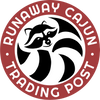Artwork Requirements
The Basics: How to send your art files.
- Image resolution should be at least 300 DPI.
- Ideally we would like vector files (AI, EPS, PDF) but we do accept bitmap (photo) files (PSD, JPEG, PNG,TIFF).
If you are unsure about how to create your artwork, please feel free to contact us.
Vector Files
Illustrator EPS, PDF, etc.
Here are a few guidelines for the best results:
- Do not apply any trapping to the image.
- If appropriate, submit files with all colors converted to spot, and all unused colors deleted from the document.
- Unless there is a large body of text in the file, please convert all type to outlines. As most t-shirt designs are not text intensive, this will prevent confusion and save you the time of loading fonts onto the disk.
- Use PMS numbers for color names. Even though the generic “red” that the software gives you might look perfect on your monitor, all monitors display differently, so use a standard way to designate colors, like the Pantone Matching System. Refer to the uncoated colors if possible. (There are no “coated” shirts!) Be sure to check the PMS book for color accuracy as the on-screen versions are often misleading.
Bitmap (Photo) Files
Photoshop, PNG, TIFF, etc.
Submit all full color, photographic files in RGB format. We can guarantee the best color fidelity if the file is in these “unadulterated” formats. If you are having an image scanned just for your t-shirt design, request RGB from your service bureau or scanner operator. Many high-end scanning units will scan images in CMYK. This is great for offset, but not so hot for screen printing. Some places will simply convert the file from the original CMYK format to RGB. This is acceptable but not the best way to do things. The key issue here is that when an image is in CMYK mode its palette of colors has been reduced for the offset printing process. If the image is to be spot color separated, we can often reproduce a wider range of colors than offset printing. Giving us the image in CMYK will limit the possibilities. Also, when a CMYK image is displayed on your monitor, the appearance of the image is controlled by a number of preferences you have set up for dot gain and printing inks. In RGB these factors will be ignored.
Photographic color and grayscale files should be to actual size, at least 150 ppi. The optimal dpi is 300.
What if your files are detailed and your resolution is below 150? You’re likely to be disappointed with the result. There are a number of techniques we can employ to compensate for a lower resolution original, so please do not try to raise the resolution by plugging in higher numbers. It’s best to contact us early in the process for help resolving this issue. (Note: if there is type in your image, it should be set in a draw or layout program. Small, anti-aliased type looks too soft when printed on a t-shirt, even if it is 150 ppi at printing size.)
Sending Artwork Files
Sending your artwork via email is easy and convenient. We also accept different types of media, including USB flash drives and CDs/DVDs. We recommend cloud based drives like Dropbox or Google Drive for extremely large files.
If possible please compress all files to a .zip when sending through e-mail to protect the data. All files that travel over the internet are converted to text somewhere along the line. Zip compression protects your files from data corruption and makes them more easily accessible.
We can receive up to 8 megabytes of files per email. If your images are larger than 8 mb, please send your files in separate emails with your name in each of them.
Send us your files at runawaycajun@gmail.com
